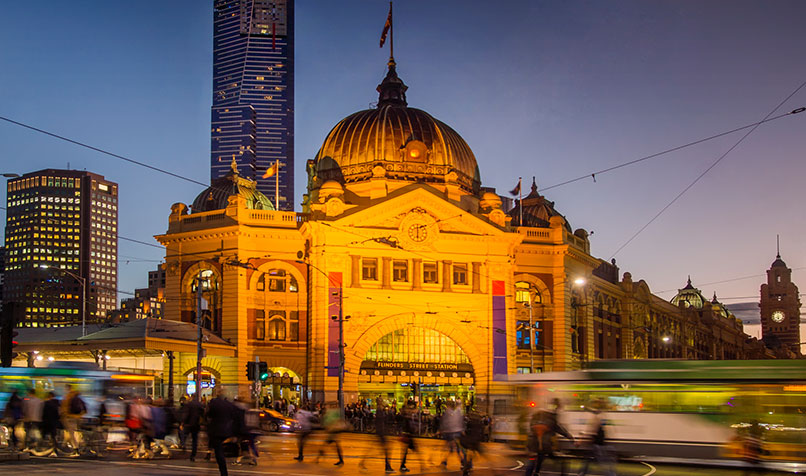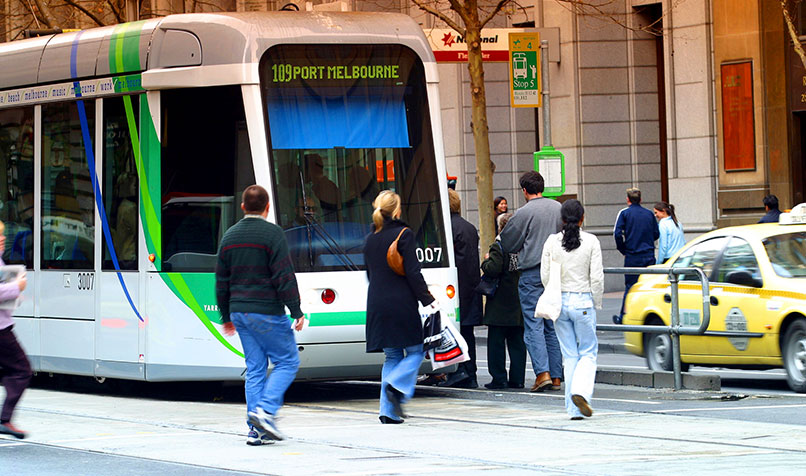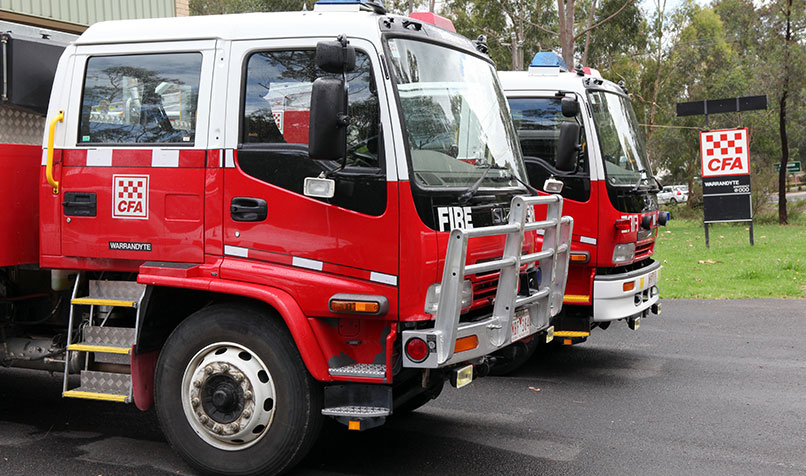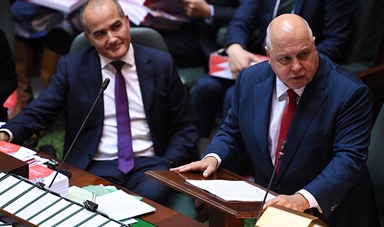Loading component...
At a glance
For business, the major announcement in this budget is a hike in the payroll tax rate for those with national payrolls exceeding $10 million. The tax collected from this increase will be earmarked to pay for improvements to the state’s mental health system.
There were other tax increases announced as the Victorian government shifts its focus to budget repair. Those include a new 50 per cent tax on the gains from rezoning decisions on gains above $500,000, higher stamp duty rates on properties above $2 million and an increase in the land tax rate for taxable landholdings above $1.8 million.
Says Elinor Kasapidis, Senior Tax Policy Adviser at CPA Australia, “Eventually Victoria will have to pay off its pandemic debt. But by seeking to raise tax revenues at this stage of the economic cycle, the Victorian Government risks damaging the state’s recovery.
“It doesn’t make sense to impose new costs on businesses and investors now. People and money are mobile. New taxes will undermine confidence and may drive them away.”
On the increase in property taxes, which the government states is aimed at higher-end properties, Kasapidis says, “This increase is being pitched as a tax on the top end of town. It’s anything but and will be passed on to renters, including individuals and small businesses. It’ll also catch many self-funded retirees who earn income from an investment property. Effectively, it’s quite a broad-based tax.”
Related content:
Kasapidis went on to say that “Victoria has one of the highest rates of stamp duty in the nation. At a time when other states and territories are reducing taxes and reconsidering stamp duty, it’s difficult to understand why Victoria would increase it.”
Kasapidis described the new 50 per cent tax on gains from rezoning as “punitive tax on unrealised property gains and may reduce housing affordability in Victoria.”
While welcoming the government’s focus on improving Victoria’s mental health system, she expressed concern over the increase in payroll tax to fund it.
Says Kasapidis, “Funding it through a surcharge on businesses shifts the burden to the private sector, which needs to be focused on its own health and recovery right now.”
CPA Australia welcomes the $288 million creative industries package, which includes $121 million for the screen industry.
“The cultural and creative sector was devastated by COVID-19. This investment recognises the importance of the sector and supports Victoria’s broader recovery,” says Kasapidis.
Economic and fiscal outlook

According to the Budget papers, the Victorian Government’s financial position has already begun to improve. In November 2020, the budget forecast a deficit of $23.2 billion for 2020-21; the government is now forecasting a deficit of $17.4 billion for that fiscal year.
A stronger economy and increased taxes is expected to lead to a smaller deficit of $11.6 billion in 2021-22, and a deficit of $2.1 billion by 2024/25.
The Victorian economy is forecast to rebound by 6.5 per cent in 2021-22, lower than its previous forecast of 7.75 per cent growth. The pace of the recovery is forecast to slow to 3.25 per cent in 2022/23.
Victoria’s unemployment rate is expected to be 5.75 per cent in 2021/22, a much better set of numbers than the last budget, where the government forecast the unemployment rate to only fall to 5.75 per cent in 2023-24.
Wage growth is expected to be low, with Victoria’s Wage Price Index forecast to increase 1.75 per cent in 2021-22, with future increases projected to remain low through to 2024-25.
Victoria’s population growth, a major driver of the state’s economy and property sector, is expected to be very low, at 0.3 per cent in 2021-22, and increase to 1.2 per cent in 2022-23.
Reopening borders, attracting international students and a business-friendly policy environment are important to attracting people to the state.
The state’s net debt is forecast to reach $102.1 billion in 2021-22 (20.3 per cent of Gross State Product), and $156.3 billion in 2024-25 (26.8 per cent of Gross State Product). Both forecasts are an improvement on the forecasts in the previous budget in November 2020 and reflect that the economy has been stronger than expected.
Some major announcements in the Budget
Tax measures
Payroll tax increase
The payroll tax for businesses with national payrolls over $10 million will increase by 0.5 per cent for every $1 of wages they pay above $10 million and a further 0.5 per cent for every $1 of wages they pay above $100 million. Existing payroll tax exemptions for private schools, hospitals, charities, local councils and wages paid for parental and volunteer leave will apply.
The tax, called the mental health and well-being levy (payroll tax surcharge) and the revenue collected will be earmarked to improve the state’s mental health system. The tax increase is from 1 January 2022.
Payroll tax cuts
The Government will bring forward the increase in the payroll tax tax-free threshold, from $650,000 to $700,000 to 1 July 2021.
The Government will also bring forward the reduction to the regional employer payroll tax rate to 1.2125 per cent – a quarter of the metropolitan rate – from 1 July 2021.
Property tax increases and new property taxes
The land tax rate will rise by 0.25 percentage points for taxable landholdings exceeding $1.8 million and 0.30 percentage points for taxable landholdings exceeding $3 million. This will apply from the 2022 land tax year.
The stamp duty rate for property transactions with a value above $2 million will increase to $110,000 plus 6.5 per cent of the dutiable value in excess of $2 million. The increase applies to contracts entered into on or after 1 July 2021.
The Government will introduce a new windfall gains tax on the gains from planning decisions to rezone land. From 1 July 2022, the total value uplift from a rezoning decision will be taxed at 50 per cent for gains above $500,000, with the tax phasing in from $100,000.
Support for home buyers and the property sector

The off-the-plan stamp duty concession threshold will remain at $1 million for contracts entered into from 1 July 2021 to 30 June 2023.
For new residential properties in the City of Melbourne that have been unsold for less than 12 months, a 50 per cent concession on stamp duty will apply for contracts entered into from 1 July 2021 to 30 June 2022. For such properties that have been unsold for more than 12 months, they will get a full exemption on stamp duty. This full exemption applies from 21 May 2021 to 30 June 2022.
The vacant residential land tax exemption for new developments will be extended from one to two years for new developments.
The tax-free threshold on taxable landholdings for general land tax rates will increase from $250,000 to $300,000 for the 2022 land tax year.
Other tax increases
From 1 July 2021, the penalty unit will increase by 10 per cent – from $165.22 to $181.74.
From 15 April 2022, the Government will extend the point of consumption tax framework to Keno; companies licensed interstate currently avoid paying tax in Victoria on Keno products supplied online to Victorian customers.
From 1 January 2022, private gender-exclusive clubs will no longer receive land tax concessions.
Support for different industries
The creative industries will receive additional support through a $288 million package. The package includes $121 million to support the Victorian screen industry and $79 million to support institutions like the Arts Centre Melbourne, the Geelong Arts Centre and the Melbourne Theatre Company.
The tourism sector will receive further support, including $43 million to attract business events to the state and $10 million to support the distillery industry.
The international education sector will receive $51 million to support its recovery. The money will go to an expansion of the state’s Global Education Network and offshore Study Melbourne Hubs in regions such as Southeast Asia, Latin America and Africa.
Transport infrastructure announcements

- $986 million to build 25 X’Trapolis 2.0 trains and supporting infrastructure for the metropolitan network
- $386 million for a new Road Safety Strategy
- $368 million to support the delivery of 100 Next Generation Trams (previously announced), including upgrades to the Southbank Tram Depot and the construction of a new tram maintenance facility in Melbourne’s north west
- $100 million to progress planning of targeted road upgrades, including improvements to safety and capacity at Calder Park Interchange
- $95 million to upgrade and maintain suburban and regional roads
- $94 million will be invested in the Melton and Wyndham Vale rail corridor to enable higher capacity trains
- The introduction of a zero-emissions vehicle purchase subsidy.
Education and training announcements
- Funding for up to 12,200 extra subsidised training places in TAFE
- 4800 additional places in digital literacy and employment skills courses
- The government will allocate $86 million to establish the Victorian Skills Authority
- Funding for upgrades to Bendigo Kangan Institute’s Broadmeadows Campus and GOTAFE’s Archer Street Shepparton Campus
- Three-year old children will have access to at least five hours a week of funded kindergarten places
- $492 million to build 13 brand-new schools
- $340 million to upgrade 52 schools
- $218 million for a new School Mental Health Fund
- $188 million to deliver maintenance upgrades at schools
- $148 million to establish the new Victorian Academy of Teaching and Leadership
Health
As part of the government’s response to the Royal Commission into Victoria’s Mental Health System, it announced a $3.8 billion spend to rebuild the state’s mental health system. Key investments from this initiative include:
- $954 million to deliver community-based care
- $370 million to improve access to mental health beds and better acute care
- $265 million for new local mental health services for adults
- $196 million to support a dedicated mental health support system for infants, children and families
- $173 million for suicide prevention and response
- $1.3 billion to continue the State Government’s public health response to COVID-19
- $556 million to build and expand 10 community hospitals, including at Craigieburn, Cranbourne, Phillip Island and Torquay
- $266 million to support the work of Ambulance Victoria, with additional triage nurses, an expansion to secondary triage services and non emergency patient transfers.
- $136 million elective surgery improvement fund
- $100 million for new emergency department paediatric zones including at Geelong and Frankston
- $99 million to expand the Angliss Hospital with a new in-patient unit
- $95 million to upgrade Maryborough Hospital
- $70 million to establish public fertility care service
- $50 million to support establishing Victoria’s capability to manufacture mRNA vaccines
Other major announcements

- Revitalising Melbourne’s CBD with $107 million package that includes $7.4 million for a new voucher scheme to encourage people to spend in the CBD
- $179 million to deliver the first stage of the transformation of the former General Motors Holden site at Fishermans Bend into an innovation hub, including housing the University of Melbourne’s School of Engineering
- Victoria’s courts will receive $210 million for measures aimed at increasing efficiency and clearing case backlogs
- $194 million for services that prevent homelessness, including a focus on people who need help in the rental market through the Private Rental Assistance Program
- $138.8 million over seven years to replace CFA radio equipment with modern digital technology.
For more information visit www.budget.vic.gov.au

